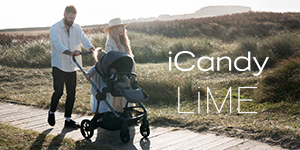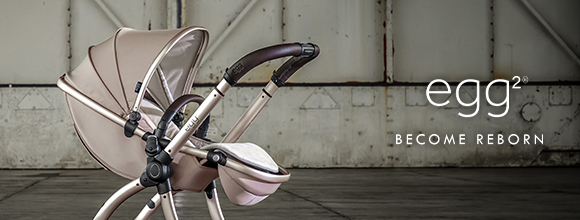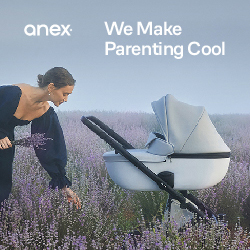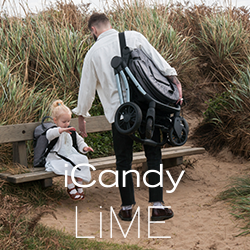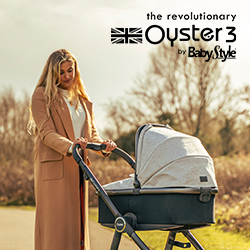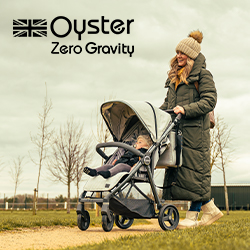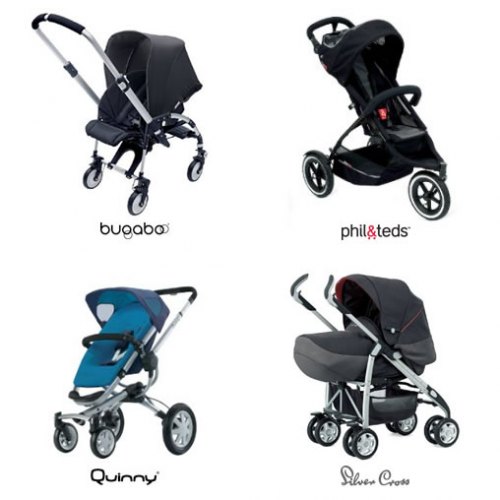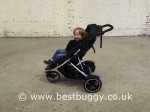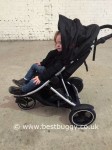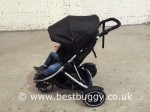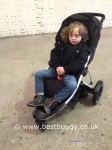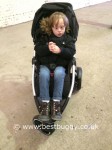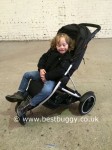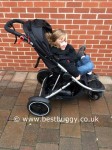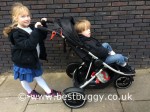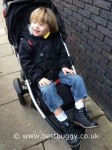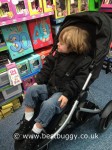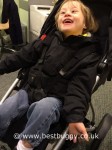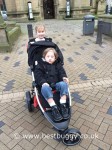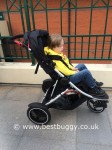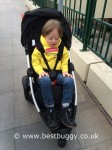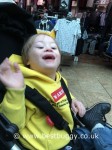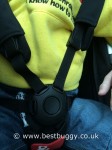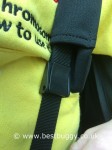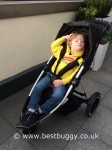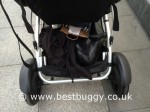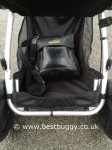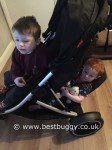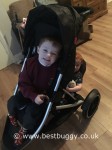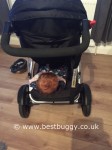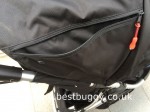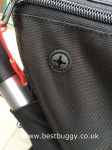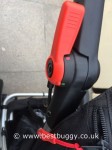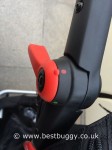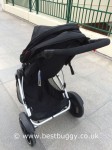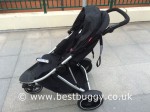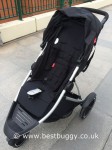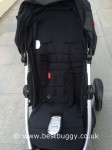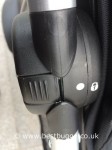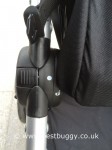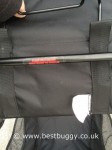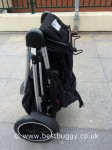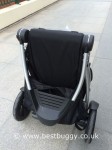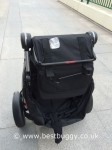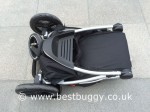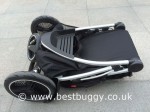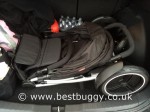Phil & Teds Dash 2015 Single & Tandem Review by Best Buggy
When Phil&Teds asked if we would like to review their new 2015 Dash, we were a little hesitant, as we have had a really mixed set of pushchairs from their company over the last few years, including ones with faults and a recall. However, we had heard that the new products were improved, and we were pleased to welcome the Dash at BBHQ. We are really pleased that we did, because the Dash is a firm favourite here now. Unfortunately, the Dash too has not been without an issue.
Phil&Teds are famous for their inline pushchairs. At one time Phil&Teds were the only name mentioned when you needed a tandem pushchair. The Dash is a single pushchair, suitable from birth to 25kgs, which can also be easily turned into a pushchair for two children – whether this is a for a toddler and a baby, or two toddlers.
First Impressions
Phil&Teds pushchairs generally speaking are large, sturdy pushchairs with great all terrain wheels. The Dash was no exception.
We have to say that we question Phil&Teds claim that the Dash is ‘uber light’ – because it implies a lightweight pushchair which at 11.5kgs, the Dash isn’t in our experience. However we also have a Phil&Teds Vibe here at present, and it is definitely lighter than that. We would say that the Dash is lighter in comparison to the other Phil&Teds pushchairs, but it is not a lightweight pushchair in the bigger overview of all pushchairs. The wheels themselves are weighty.
The Dash feels good quality. The frame is solid, the fabrics are strong and hard wearing. It is a smart looking pushchair, and we love the new 2015 colours. There is a cosy soft liner on the seat, and a large hood. It was simple to undo the fold clip, open up the pushchair, pop the hood on and go. All round we were looking forward to getting on the road with the Dash.
Child Comfort and Seating Positions
The seat on the Phil&Teds Dash is huge with really good leg room. We love the excellent upright seating position. We had always felt that the seat on the Verve was too reclined and our eldest had looked uncomfortable. This was confirmed when we opened the Vibe box, which also has a reclined seat. However, the Dash has really won our votes, because it is obvious that Master BB, even age 5 (108cm tall), was very comfortable. His feet rested well on the footrest with no dangling. The seat was deep enough for him. There was plenty of headroom. He simply looked very comfortable. He even crossed his legs, which is a sign that he is happy. The main seat can hold a huge 25kg in single mode. Little Miss BB (aged 7) had plenty of room in the seat too. We really like the pull out leg support for a younger child. Rudimentary and simple but very handy to support tired little legs. All round an excellent seat.
The seat has two stages for the recline. The first involves gradually releasing the straps at the rear of the seat. This gives a partial recline which will be sufficient for most children – perfect for a child who falls asleep mid walk. The recline can be stopped at any point between upright and this partial recline. For a young baby, or a longer nap, a full recline may be required. This involves undoing two zips either side of the main seat (they have red tags on and start behind the child’s head). These release a full recline. Our only warning is that these are quite fiddly to do up afterwards: difficult enough to push the fabric back in with no child in the seat, but even harder with a child in the seat. However, there is a big difference between this small recline, and the full recline. The small recline really isn’t sufficient for a sleeping child, but the full recline is really faffy to do. There really needs to be some kind of easy mid recline.
We do like how the seat tilts slightly with this more full recline which keeps little legs up and supported. If this lie flat position is being used for a baby, then the harness can be threaded through the liner to make it fit a smaller child. Very good adjustments! The rear of the seat can be zipped off for ventilation or to see a child. However, for one baby, it is easy to peek down behind the hood to see the child from above.
Harness and Bumper Bar
The harness is different to our previous Phil & Teds pushchairs because the harness has 4 points – 2 from the shoulders and 2 from the waist which needed to be plugged individually into the buckle. On the one hand, this was really simple to do, but on the other, if you lost one part e.g. the child was sat on it, or you accidentally twisted the harness (both happened regularly with us) then unpopping the buckle, meant having to start inserting the 4 parts all over again. It is possible to open one side of the buckle i.e. just two parts, but this takes care, and we usually ended up undoing all the parts again in our rush to sort it out! We will confess to getting lazy and only doing three points of the harness up, which actually is something we don’t like to do. This is one reason that we prefer pushchairs to have just two parts to plug into a buckle, because being the adult being complacent because something is difficult to do, is compromising the child’s safety. However, we also understand that Phil&Teds are a global country, and have to make pushchairs to meet all safety standards, and I believe it is Australia who insist on this design of 5 part buckle. The 5 part harness did make adding a liner or footmuff simple.
There is a good range of harness height settings. The tallest one is perfect for Master BB. We like that the harness can be adjusted for a tiny baby too with a choice of harness holes.
The harness was a very generous length, and Master BB had harness to spare, even with his thickest winter coat on. The harness was easy to adjust – there are sliders which flick open and closed very easily. However, they are probably too easy, because we have had to stop and tighten the harness on numerous occasions because they have slipped open and Master BB did play with them, constantly flicking them open and closed. Master BB, aged 5 is pretty sensible, but we would be concerned that a younger child may not be as safely secured as we would like. Master BB could have escaped if he wanted to.
The harness has pads which are shaped at the top so that they tuck into the harness holes to keep them in position. However, in reality they do quickly fall out, and slide off the ends of the harness. We have lost the pads off the harness on a few occasions, and they have now been removed – one is sat here on our desk, and we don’t know where the other currently is ![]()
The Dash comes with a bumper bar. However, we had to remove it in order to get Master BB in and out of the seat. Master BB could also easily pull the bumper bar off, so it quickly got put into the basket, and never got used again. We had a report of one older child who kept leaning over to talk to her sibling in the Dash, but even the slightest pressure meant that she knocked the bumper bar off . The bumper bar does sit unusually high on the child.
Hood
The hood on the Dash is large with a good flick out visor in front. It is a ‘follow’ the sun hood which means it can be moved into any position above the child, to keep the sun off them. It is good how the fabric below the hood stays in position, even if the hood is detached to move forwards. We like that the gap behind the child’s head is covered in fabric to keep them snuggly and warm. This is a positive change to previous Phil&Teds products.
We did love the pocket in one side of the hood to keep small items or a phone safe and secure, although we recommend keeping the zip shut when the hood is pushed back. There is an eyelet for headphones to be threaded through for the parent to listen to music as they stroll. The phone or ipod can then be zipped into the pocket. It is a shame that there is no pocket on the other side of the hood as extra storage is always handy.
Storage
One of the best things about the Phil&Teds Dash is the HUGE basket in single mode. No matter what we put into the basket, it just kept swallowing up our things. It was great! However, this quickly changes in tandem mode, because with the addition of the double’s kit, and a child in the seat, the basket space disappears. This needs to be borne in mind if you need to carry a changing bag or shopping as well as children. There is a little space in tandem mode, but it really depends on how much leg room your little one needs underneath.
Handlebars, Handling, Wheels and Brake
The dense foam covered handlebar on the Dash is highly adjustable with lots of positions from very high to very low – we counted 12 positions in total. However, the handlebar is ‘naturally’ very high. This means that although it is adjustable and can be made very low, it still feels high. We spent a lot of time fiddling with the handle and never quite getting it feeling quite right. The handlebar is adjusted by pressing in very firmly a button on either side of the handlebar. This required stopping the pushchair every time we wished to adjust the handlebar. We don’t normally notice this, but because the height was too high, we were playing with the handlebar more than usual to get it feeling right.
The Phil & Teds Dash is all terrain. There are three large aeromaxx puncture proof tyres. The smaller single front wheel is a harder rubber to the rear wheels. These tyres supposed to feel like air tyres, and the rear ones certainly perform well, and have a bounce in them. The front wheel was solid but it has good suspension on it. The wheels are heavy and and do add weight to lifting and carrying the pushchair. The wheels are easy to fit, and to remove, which is also handy, especially for washing or storage. The wheels have also been fitted with a grille, which stops little fingers from getting trapped in a moving wheel, although we do question why small holes have been used because they seem the perfect size for a tiny finger to get stuck in. There is a mudguard too, to prevent children touching the rear wheels in tandem mode.
The Dash is a big pushchair – there is no doubt about that. It feels large and tall in small spaces. However, we did get the Dash into some very small spaces easily. We have had no issues with steering or manoeuverability as some all terrain, large wheel pushchairs do. We have enjoyed pushing the Dash around. It is really lovely to push one handed, even with a heavy child on board, and even with two children on board. It was fine to get up steps, although we do think Phil&Teds are prone to over exaggerating ‘kerb pop’ – even more so that the Dash is ‘uber light’! The only downside we did find was that the Dash was a bit wobbly when coming down a step. Two weeks later, we took the Vibe down the same step, and the Vibe handled it better. We have been able to get the Dash through all doors and even into quite tight lifts.
There is a hand operated handbrake on the Dash. This is located on the right hand side of the handlebar. It is a flick on and off red lever. It is easy to engage and to disengage – maybe a little too easy as the children can easily release the brake. It has certainly been much simpler and easier to use than a footbrake, and it is considerably better than the frustrating central handlebar brake, which is on the Verve and Vibe. Bear in mind that the brake is to one side, which if you are stood at the other side means leaning across to use the brake e.g. if you get on a bus or train, or have to be in a confined space.
Baby Options
There are several options for a young baby. The seat can be used on it’s own for a baby. Adding a cocoon would make this a snug area for a child. (see below for more information).
There is also a Dash Snug carrycot which fits neatly onto the chassis using carrycot adaptors. Removing the seat fabric makes this look more like a pram. The seat fabric can literally be removed in seconds – simply undo the eyelets in the fabric on either side of the pushchair (near the hood). Pull the fabric forwards. Then lift the fabric easily clear of the base of the seat. Really really easy, and so refined!
A car seat can be added to form a travel system for one or two babies with the addition of infant carrier adaptors. The rear infant carrier will forward face underneath, whilst the upper infant carrier will parent face. This may be the solution for parents who would like to consider the Dash for twins although we wouldn’t recommend use of an infant carrier for longer than a short outing.
The doubles kit can also be fitted to the chassis (with or without the seat fabric on) to give a parent facing option. This requires double kit adjusters to attach the seat to the main frame. These come in the doubles kit box, along with a sun mesh cover. The double kit adjusters are two circular brackets which need to be pushed very hard onto the chassis about 5mm lower than the hood joint. There is a hole in the frame where a pin needs to fit. We really struggled to fit these – both to find exactly the right position, but also to push hard enough to get the brackets to fit onto the frame. We did have the fabric attached, and it may have been simpler to release the fabric and then add the brackets, and then put the fabric back on. Once attached they were firm.
Please note that when the doubles kit is used for a baby parent facing that there is no hood to offer protection, but also the seat is at a fixed 45 degree angle. This is the same as a typical car seat and carries with it risks for the child’s health, and should be used only for short spells of time.
Doubles Kit – a Tandem for two
The Phil&Teds Dash transforms into a tandem pushchair for two mainly using zips and straps. We found this much simpler than the older Phil&Teds tandems that we have tried.
There are several tandem modes:
1. New baby and toddler – baby on the main seat, and toddler in the doubles kit on top
2. New baby and toddler – baby in car seat on top, and toddler in the doubles kit at the bottom
3. Older baby and toddler – toddler in the main seat, baby (6 months +) in the doubles kit underneath
4. Two babies – using either two car seats or one in the doubles kit parent facing and one in the main seat underneath
5. Two toddlers – one in the main seat on top, and one in the doubles kit underneath
1.For a parent with a toddler and a new baby, first a space needs creating for the under 6 month old baby who goes underneath the older child on the main seat fabric.
On each side of the main seat is a red tag zip which needs pulling down from the rear of the seat, down towards the seat pad. This releases fabric so that the seat lowers partially down. At the rear of the seat are two straps (used for the recline). Once these are released, the seat drops right down. At the same time small ‘walls’ of fabric come up to form the ‘nest’ area. The rear of the seat has a fabric panel which zips round. This needs undoing so that the space / baby can be seen. There is a toggle above the baby space where the fabric flap can be secured. Whilst we are really pleased to see the fabric panel because this offers the baby protection from the elements, there is absolutely no way to see the baby underneath once they are posted in through the back into the cave (or in through the top and the doubles kit placed on top). It is a shame that there is no peekaboo window in this section so that you can keep an eye on the baby especially in winter. The harness on the main seat can be adjusted to fit a newborn baby to keep them secure. The baby rides with their head at the rear of the pushchair, facing forwards.
The toddler then is seated on top, above their sibling, on the doubles kit. This seat is very high which most children will love. The toddler will need lifting up and very securely fastening in to ensure their safety during use. The toddler will be unable to use the hood, and if it rains, the raincover will be literally in their face. There is nowhere really for the child to place their feet. The calf rest can be pulled out for them to rest their feet, but we would not like to put any weight on this. The seat itself can hold up to 20kg in this position.
So with a seat that really is not ideal for the toddler, plus being unable to see the baby unless the rear panels is removed; this set up for us is really a compromise to get you through the newborn baby phase. Personally, we hate it….we really hate this set up!
2. Baby in the car seat on top, and the toddler underneath; 5. Two babies in car seats; and one baby in car seat and one in the ‘baby space’. This isn’t a set up that we would recommend for any length of time because of the potential health effects upon the baby of being scrunched up in a car seat for too long. However, this is an option, and it is possible to do. To be fair if Phil&Teds would safety certify a lie flat car seat such as a Kiddy Evo-luna i-Size or a Cybex Cloud Q, then this set up would actually probably be far more preferable than hiding the baby in the dark cave for six months! However, neither of these lie flat seats are currently listed as options. The doubles kit also be can be turned parent facing on top so that baby twins can be carried – one in the doubles kit, and a newborn baby can be carried in the ‘nest’ like space beneath. One thing for sure is that one twin definitely has an advantage over the other, and I am not sure how many twin mummies would stand for this inequality. However, this may be of particular interest to a childminder for example, who needs a super flexible pushchair.
3. & 5. Once the baby is old enough to go into the doubles kit underneath the pushchair, things improve a lot!
This is where the Phil&Teds comes more into its own, but it still isn’t ideal. So if you can survive the first six months, and don’t mind some compromises, then read on!
At this stage, the doubles kit is relocated downstairs! The two round adaptors mentioned in the parent facing option above need moving to either side of the basket, near the rear wheels. The doubles kit drops very easily onto these – to be honest, compared with some of the older Phil&Teds, this doubles kit fitting is a complete breath of fresh air – beautiful to do!
The seat reclines back one position, offering a good space for a baby to nap. Simply press on the two white circles on the inside of the seat and tilt the seat back. However, these are very tricky to do with a child in the lower seat. You have to lean over and across the child to recline. The lever recline of the Verve was much better. Again, there seems to be space and open-ness around this pushchair than previous ones we have owned.
The doubles kit seat is very short, even for a young toddler. The 18 month old we tried in the seat had most of his head hanging over the rear of the seat. This probably looks worse because there is no hood on the doubles kit. A little one is left very exposed especially in winter. So really, the doubles kit only has approx 6 months of life between 6-12 months before the seat seems too short, unless you aren’t particularly fussy!
The downside of this lower seating position is that space in the basket is restricted, and this becomes more of an issue as little feet grow. Phil&Teds do make pannier bags which are worth the investment although they do add width to an already fairly wide pushchair.
The older child meanwhile takes over the huge main seat. This is now sat upright by doing up the various zips etc.. There is bags of room for any child whilst their baby sibling snoozes underneath. As the baby grows, there is still more than adequate space in the doubles kit for a reasonably sized toddler. It can hold up to a 15kg child. We did…*cough* have Little Miss BB aged 7 in the upper seat, and Master BB aged 5 in the lower seat just to see how they would fit. Little Miss BB was fine up on top. Master BB height wise was too tall, for the doubles kit seat, but we were pleased to see he had plenty of leg room. An extreme test, and not recommended, but it makes a point!
Storm Cover
The storm cover for the Dash is great. It is flexible and easily throws over one or two seats. There is a large panel at the rear which can be opened to access the child in the doubles kit. A young baby could even be lifted out through this. If the raincover is only required for one child, then the storm cover can be adjusted and fastened at the rear using a toggle to make it smaller. It is great to have just one storm cover, instead of two, like there used to be on older Phil&Teds pushchairs.
Fold
The fold on the Dash is really easy. It is not logical though, and has been one of the few times we have had to reach for the instruction booklets to work out how to do it! The bumper bar can be left on to fold, but it needs to be folded upwards towards the hood at the start.
To fold look on the left hand side (as you look at the Dash from the front), where the frame joint it, there is a round plastic piece. Above this is a slider button with ridges. There is a lock symbol by this. Once this has been located, then lift the front of the seat upwards. As you bring the seat up towards the hood, slide the slider button, and then using the bar under the seat, keep pushing the seat upwards, so that the seat is literally folded in half. As you do this, the frame will start to fold with the seat. Keep going until the seat and pushchair are folded in half and lock into the folded position. There is a fold lock. Be careful because the handle will touch the floor as you fold. From past training on the Phil&Teds pushchairs, we know that the handles are made from materials to withstand damage, but even so, the handle will get some stick, and will get dirty and scuffed. The folded Dash will freestand with the front wheel in the right position. It is almost impossible to fold the Dash with a footmuff on, so bear this in mind if you are outside a lot in winter.
It is also possible to fold the Dash with the Doubles Kit on, and also for the Dash to still freestand! Pretty neat! The front of the lower seat needs folding in half upwards onto the seat pad. Then there is a ridged slider button on the left hand side, and around button on the inside of the seat on the right hand side. Slide the slider button, and push in the round button and fold the seat upwards so that it tucks underneath the seat of main pushchair. The lower seat needs to go all the way forwards (it will push the upper seat upwards) before folding the main seat. It is so clever!
Unfolding the Dash is easy, however, it is important to look carefully when undoing the fold lock because it is easy for it not to release fully thus preventing opening – it isn’t simply undo and pull, you need to pull slightly as you undo the fold clip. The Dash easily opens then until it is stood back on all three wheels. The front of the seat will probably want pushing back down into the correct position. If the doubles kit is fitted, then this will need opening back up ready for use.
Before we conclude, as we said at the start we were hesitant about having a Phil&Teds or Mountain Buggy product again after issues in the past. When we attended the Phil&Teds University Day some years ago, we were actually told that the first batch of any P&T/MB product was viewed as a test run, and it does show in their track record across time. When we started this review, we wanted to gloss over this, however, whilst writing up our review, there has been yet another recall on one of their products – this time on our Dash. Now to be fair to Phil&Teds, they have dealt with this recall very swiftly. It took seconds to order a new replacement chassis, and it arrived within days. What we DO object to, is that we have to pay for a courier to return the old chassis in a huge box, to Phil&Teds, in return for a credit in their shop. This really is NOT good customer service! If a product is recalled, then it is not the customer who should be left out of pocket.
Anyway, we are going to leave this to one side. Let’s pretend we had finished this review before the recall, and that all future Dash pushchairs are perfect………so let us continue:
In Conclusion
We have been very pleasantly surprised by the Phil&Teds Dash. It is so much more refined than the Phil&Teds of a few years ago. The reclines, and conversion to a tandem are simpler. We like that the space at the back of the seat now has a cover option. The way the Dash folds and the way the doubles kit drops on so easily are all refinements which make this pushchair simple and easy to use.
We have enjoyed using the Dash a lot, and it will be staying here at BBHQ long term, (with its new chassis,) because of the very roomy seat and large basket. We do find the pushchair as a whole large and heavy, but for those who need this pushchair as a tandem, or for an older child, or for off road use, then this is a compromise that is worth making. However, we are not sure we would want choose such a large single pushchair unless there was a good reason for it.
We especially love the large, upright seat, and the deep footrest. We like the seat liner and the hood although we would prefer a flap at the rear of the hood. The full recline is tricky to do. The harness we feel could be substantially better to ensure the complete safety of a child, specifically because little fingers will play with the slider clasps – they are perfect to flick up and down. The Dash needs close supervision to ensure that a child doesn’t release the parking brake, but there is a tether strap to prevent the pushchair running away. The puncture proof tyres give peace of mind. We love the easy, freestanding fold.
All round, we would recommend the Dash. It is certainly the best Phil&Teds we have had, and there is no doubt that changes such as the fold, have improved use.
We are going to give different Best Buggy star ratings for single and tandem use.
As a single pushchair, the Phil&Teds Dash fares well. If you want a big and sturdy pushchair, then it really is fairly good but not perfect, and it is not one we would choose unless we had a reason to need something so large, or all terrain. We give the Phil&Teds Dash Single a Best Buggy 4 Gold Star rating.
As a tandem, we are less impressed. If you need a very versatile pushchair, then the Dash has lots of options, but whether any of them really work well is questionable. It is almost heartbreaking to have to post your precious newborn into the dark cave at the back of the Dash, whether they are awake or asleep (or equally to else expose them to all the elements if you choose to remove the back panel). The older toddler meanwhile on top is equally exposed.
Personally, we would find another option to get through the baby phase, and then consider the Dash as a tandem once the baby reaches six months – it is definitely better as a two toddler pushchair, but even then is limited by the short seat back of the doubles kit and tricky reclines.
In our opinion there are definitely better baby and toddler / baby / twin pushchairs on the market. So really once again, the Dash has to have long term benefit for you, whether this is the neat fold with both seats enclosed, or the off road wheels for dog walking. Giving the Dash as a tandem a star rating is therefore difficult. It is very clever in design, but there are too many flaws, and no mode particularly works well. We would give the Phil&Teds Dash in Tandem mode, a Best Buggy 3 Gold Star rating.
